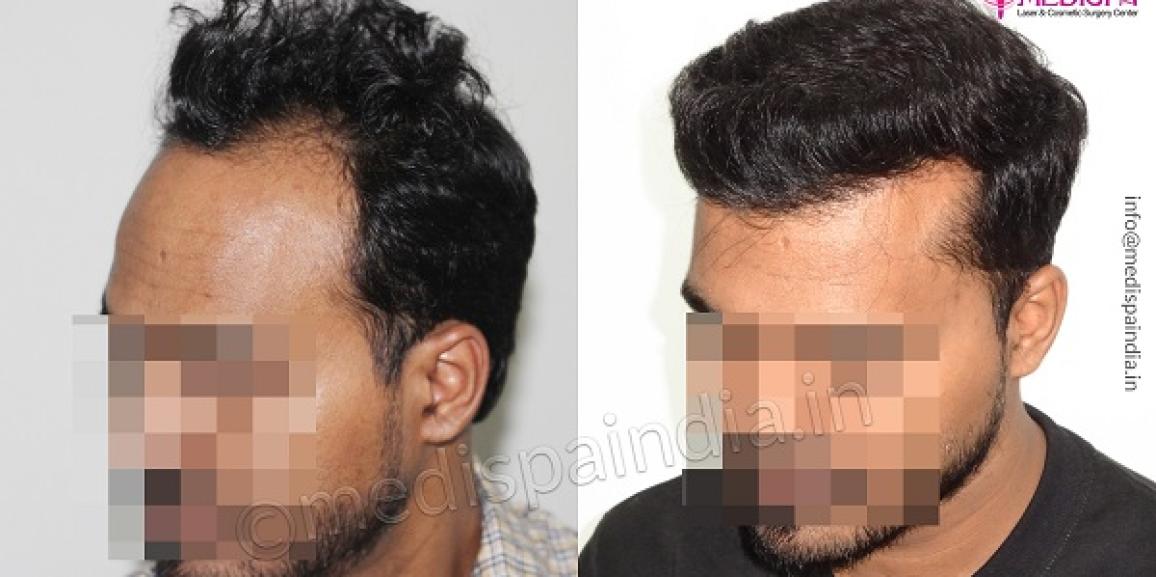
No one likes to lose their hair in life, but for some people, these conditions are inevitable. Sufferers of hair loss continue to struggle with choosing a hair loss treatment option that will work for them.
When dealing with hair loss, people frequently attempt numerous self-care therapies as well as those recommended by loved ones or advertising. But regrettably, the majority of these cosmetics do little to prevent hair loss. You must see a doctor for a consultation in order to get all of your questions answered and find out which treatment option is best for you.
Your scalp will be thoroughly examined at different stages of the first appointment so that the extent of your baldness can be ruled out and the reason of your hair loss may be determined.
Let’s find out which hair loss therapy is best to use when.
Medications for hair loss:
For the treatment of hair loss, there are 2 drugs on the market:
- Minoxidil: This over-the-counter drug, which comes in the form of a topical lotion, aims to slow the rate at which hair is lost and thickens the hair that is already there. This has been proven to be helpful for preventing hair loss, but it’s possible that the effects are only short-term and will go once the medicine is discontinued.
- Finasteride is an oral drug that is used to reduce the rate of hair loss and speed up hair growth. Although the medicine has advantages, these advantages may only last a short while, and if you stop using it, your symptoms may return. Additionally, the drugs are not advised for use in women who are pregnant or breastfeeding and have particular negative effects.
Hair transplant
If carried out by skilled hands, a hair transplant is a cosmetic surgical treatment meant to correct hair loss permanently and yield natural results. The donor area is used to harvest hair follicles, which are then moved to the graft separation room where they are dissected and separated into their individual follicular units. By taking care of the aesthetic hairline, these follicular units are subsequently transplanted to the recipient location. During the initial consultation, it is important to evaluate the amount of the baldness and the availability of hair density in the donor area to determine whether the hair transplant process is feasible.
The frequency of hair loss is rising worldwide, and hair transplant in Jaipur has become quite popular. Due to increased competition in the hair transplant sector, hair transplant cost in Jaipur has decreased significantly. For their hair transplant tourism, people from all over the world are drawn to India, especially the capital city. Only a few hair transplant doctors from India have managed to establish themselves as among the best in the world.
Dr. Suneet Soni is regarded as one of the greatest hair transplant surgeons in the country and is well-known and well-liked across the world for his USP “hairline designing.” His surgical abilities are unmatched, giving patients the most hair density with the least amount of damage to less than 1%.
Possible treatments to deal with pattern baldness?
- Hair oils, shampoos, etc: Typically, patients attempt them as their first line of defence against baldness. However, it is really questionable whether such cosmetic items are genuine.
- Hair accessories: To cover up bald patches, many individuals use hair extensions, wigs, or suction wigs. It should be emphasised that they are only short-term fixes that require expensive upkeep and constant replacements after a predetermined amount of time. The most disheartening aspect of the results is their unnatural appearance.
- Prosthetic hairs: These are more sophisticated than wigs since they may be specially made for each patient. These hairs have been expertly crafted to seem more realistic. But once more, they require continual replacement after a predetermined amount of time, making them transitory as well.
- Medication: Minoxidil and finasteride are the two commonly used drugs to treat hair loss, although their effects are temporary. After the medications are withdrawn, the issue is reported to recur. Additionally, long-term usage of drugs never comes without adverse effects; for this reason, they should be cautiously prescribed.
- Hair transplantation: As previously mentioned, hair transplantation is a less invasive surgical treatment. Because non-DHT resistant roots are transplanted at the bald region, the resulting hair is natural and permanent. It is carried out using either one of the two procedures, or occasionally both, namely FUT (Follicular Unit Transplantation) and FUE (Follicular Unit Extraction). As is clear, a hair transplant is the only long-term treatment for pattern baldness.
Why Is hair transplant the best and permanent solution for pattern baldness?
- Since the patient’s own DHT-resistant hair follicles are transplanted to the recipient bald region, only hair transplant can provide permanent results.
- Hair transplant gives invisible, natural results that are not noticeable to others.
- Hair transplants offer long-term advantages to those who are experiencing progressive hair loss since the hair follicles can be saved for subsequent sittings.
- Unlike other approaches, the treatment does not require any significant upkeep or replacement following physical recuperation.
- Hair transplantation is a highly safe operation when done by a qualified surgeon, and there often aren’t any difficulties or morbidities of any kind.







